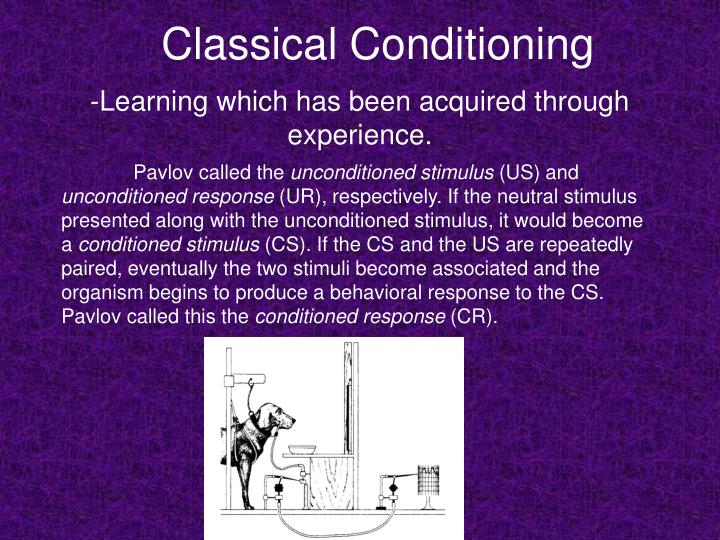
Watson in which there was a child “Little Albert” and a Rat. Here we will discuss this theory with the context of the development of phobias in human beings. This process of learning is known as classical conditioning.ĬLASSICAL CONDITIONING APPLIED TO HUMAN BEHAVIOUR.Ĭlassical conditioning theory of learning has universal application. So in this condition, the “bell” worked as a “conditioned stimulus” and “ability to produce salivation” depended on pairing with the food was conditioned response. Pavlov played bell only and on listening to the bell, the dog started showing salivation. But then after some trials, there was no food along with that sound. The dog started showing the process of salivation, which is a natural behavior. Now try to understand this – Firstly, the dog was exposed to food along with sound. Only on listening to the sound of the bell, the dog started to salivate. They are unconditioned because they are natural and not learned.Īfter repeating this process a number of times, Pavlov played the bell only and did not present any food to the dog. In this situation, “food” is the “unconditioned stimulus” and “Salivation” is the unconditioned response. On seeing food, the dog began to salivate. It means whenever the dog saw food, Pavlov played a bell. He gave food to the dog along with the sound of the bell. But he noticed an interesting fact with the help of which he developed the concept of classical conditioning. Pavlov was conducting his research on the process of digestion in dogs. They work in a particular way for conditioning to take place. These elements must be present in the classical conditioning theory of learning.

CLASSICAL CONDITIONING THEORY OF LEARNING.īefore discussing classical conditioning of learning, we want to make our readers aware of some elements of this theory. Then readers will be able to get proper knowledge about the concept of classical conditioning. Now we will discuss the classical conditioning theory of learning in detail. (Don’t worry if you find this difficult to understand as “the psychology notes” will provide easy language ahead). In it, the neutral stimulus develops the capacity to elicit a response after association with the original stimulus. It is a type of learning in which the stimulus is capable to elicit a response that was originally elicited by another stimulus. Here two things are associated – one is the same name (let’s say Tommy) and the second is the repetition over time.īefore discussing the whole theory let’s discuss some key elements or words related to classical conditioning so that reader will not find any difficulty in further discussion. It means they get conditioned about their names after listening again and again. For instance, animals recognize their name when we call them with the same name a large number of times. In simple words, we can say that conditioning is when a living organism learns things in association with other things.

WHAT IS THE CONDITIONING?Ĭonditioning is the situation in which the learning takes place in the association. We will discuss this theory in a detailed manner so that students get clarity about it.īefore moving further, we should know about the term CONDITIONING. As a result, he gave “Classical Conditioning theory of learning”. During his experiment with a dog, he comes to know about the learning process. Pavlov developed a device that measured the amount of saliva a dog produced. Meanwhile, he came to know about the psychological aspect of learning by performing experiments on dogs.

Pavlov was researching the digestive systems of dogs. He provides the base of the learning process in living organisms. He contributed a lot to the field of physiology and psychology. Ivan Pavlov was a great physiologist who belongs to Russia.

Classical conditioning, conditioning, IAS, learning, optional psychology, pavlov, Psychology, The Psychology Notes, theory, UPSC Contents


 0 kommentar(er)
0 kommentar(er)
